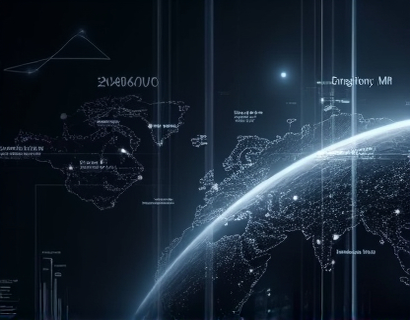Streamlining Operations and Enhancing Customer Engagement in Aquarium Management
In the dynamic world of aquarium management, operational efficiency and customer satisfaction are paramount for long-term success. The integration of advanced management software can significantly transform the way aquariums operate, offering a robust solution to streamline daily tasks, optimize inventory, and enhance the overall visitor experience. This article delves into the critical features and benefits of such software, designed to provide a competitive edge and ensure a seamless experience for both aquarium operators and patrons.
Optimizing Inventory Management
One of the core challenges in aquarium management is maintaining an optimal inventory of aquatic life, food, and supplies. Advanced management software addresses this by providing real-time inventory tracking, automated reordering, and detailed reporting. Operators can monitor stock levels, receive alerts when items need to be replenished, and avoid overstocking or stockouts. This level of precision ensures that the aquarium always has the necessary resources to care for its inhabitants and meet customer expectations.
For instance, the software can integrate with suppliers to streamline the ordering process, reducing manual errors and saving time. By maintaining accurate inventory levels, aquariums can reduce waste and lower operational costs, contributing to better financial performance. Additionally, detailed reports help managers make informed decisions about purchasing patterns and inventory turnover, further optimizing resource allocation.
Precision in Tracking Aquatic Life
Tracking the health and well-being of aquatic life is crucial for the success of any aquarium. Advanced management software offers tools to monitor and record vital information about each species, including species identification, age, size, and health status. This data can be used to create comprehensive care plans tailored to the specific needs of each animal, ensuring optimal health and longevity.
The software can also facilitate routine health checks and vaccinations, sending reminders and tracking results. This level of detail helps staff stay organized and responsive to the needs of the aquatic inhabitants. Moreover, the ability to generate detailed reports on the health and population dynamics of the aquarium provides valuable insights for management and can be used to improve breeding programs and conservation efforts.
Simplifying Daily Tasks
Aquarium operations involve a multitude of daily tasks, from feeding and cleaning to maintenance and customer service. Advanced management software simplifies these tasks by automating routine processes and providing a centralized platform for task management. Operators can create and assign tasks, set deadlines, and track progress all within the system. This not only improves efficiency but also ensures that nothing falls through the cracks.
For example, the software can manage feeding schedules, automatically calculating the appropriate amount of food based on the species and quantity of aquatic life. It can also schedule cleaning and maintenance tasks, ensuring that the aquarium remains clean and well-maintained. By automating these tasks, staff can focus on more critical activities, such as interacting with visitors and providing educational content.
Enhancing Customer Engagement
Customer engagement is a key factor in the success of any aquarium. Advanced management software can enhance the visitor experience by providing tools to manage customer interactions and feedback. Interactive kiosks and mobile apps can be integrated with the system to offer visitors personalized information about exhibits, feeding times, and special events. This not only improves the visitor experience but also encourages longer stays and repeat visits.
Moreover, the software can collect and analyze customer data to gain insights into visitor preferences and behavior. This information can be used to tailor marketing campaigns, improve exhibit design, and introduce new attractions that align with visitor interests. By understanding and responding to customer needs, aquariums can build stronger relationships and foster a loyal customer base.
Improving Operational Efficiency
Operational efficiency is essential for the smooth running of an aquarium. Advanced management software streamlines various aspects of operations, from staff scheduling to energy management. By optimizing staff schedules based on peak visitor times and task requirements, aquariums can ensure that they have the right personnel in the right places at the right times. This not only improves service quality but also reduces labor costs.
Energy management features can help monitor and control the use of electricity, heating, and cooling systems, leading to significant cost savings. The software can identify periods of high consumption and suggest adjustments to reduce waste. Additionally, maintenance scheduling can be optimized to minimize downtime and ensure that all systems are running efficiently.
Data-Driven Decision Making
One of the most significant advantages of advanced management software is its ability to provide data-driven insights. By collecting and analyzing data from various sources, operators can make informed decisions that drive business growth and improve operational performance. For example, attendance patterns can be analyzed to identify peak and off-peak times, allowing for better staffing and resource allocation.
Financial reports can highlight areas of expenditure and revenue, helping managers identify cost-saving opportunities and revenue-generating potential. Customer feedback data can be used to assess the effectiveness of marketing strategies and make necessary adjustments. This data-driven approach ensures that decisions are based on factual evidence rather than assumptions, leading to more effective and strategic planning.
Building a Competitive Edge
In a competitive market, aquariums that leverage advanced management software can gain a significant advantage. The ability to operate more efficiently, reduce costs, and enhance the visitor experience sets these institutions apart from their competitors. By focusing on operational excellence and customer satisfaction, aquariums can attract more visitors and build a strong reputation in the community.
Moreover, the use of technology demonstrates a commitment to innovation and modernization, which can be a selling point for both visitors and potential investors. As the industry continues to evolve, those who embrace advanced management solutions will be better positioned to adapt to new challenges and opportunities.
Conclusion
Advanced management software is a powerful tool for aquarium operators looking to streamline operations, enhance customer engagement, and achieve sustained success. By optimizing inventory management, tracking aquatic life with precision, simplifying daily tasks, and providing data-driven insights, these solutions offer a comprehensive approach to aquarium management. As the industry becomes increasingly competitive, adopting such technology is not just a benefit but a necessity for those aiming to thrive in the modern aquarium landscape.










































